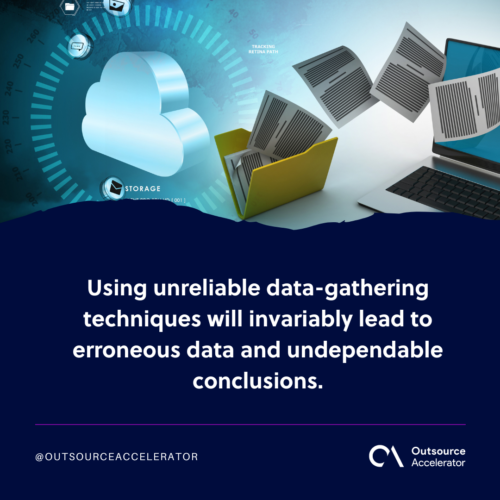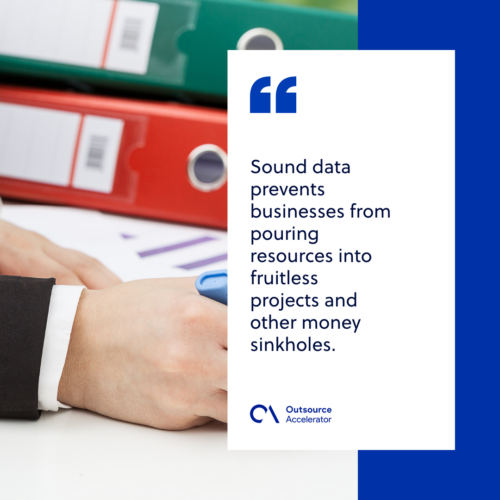All you need to know about data instrumentation

Data is a vital part of businesses.
It provides businesses with the information they can use to improve their products and services. It also gives them insight into what competing companies are doing that should or shouldn’t be emulated.
The importance of reliable data is even more apparent in today’s data-driven market. Equally important is the reliability of the methods used to gather the data that businesses rely on.
Using unreliable data-gathering techniques will invariably lead to erroneous data and undependable conclusions.
Thus, businesses should invest in proper data instrumentation to ensure the quality of their data.

Data instrumentation: What is it?
Data instrumentation refers to both the process of collecting data and the instruments used[1] therein.
This process covers the entirety of the selection, construction, design, and implementation of a data collection method or instrument.
The primary objective of data instrumentation is to provide reliable data collection. For this reason, it’s essential to ensure that these data-gathering instruments adequately cover the entire facets of the research where it’s used.
The accuracy and reliability of the collected data are reflected in the quality of the data-collecting instruments used.
An accurate data-gathering instrument will provide sound data, while a poorly-made one will render data with questionable quality.
Techniques used in data instrumentation
Researchers utilize a number of techniques in data instrumentation. These methods are categorized into two:
Primary data collection
Primary data collection methods are called such because these methods rely on data gathered first-hand by the researchers.
This is often the initial step in data collection and is performed before other individuals carry out further research.
Results garnered from primary data collection are often highly accurate. However, the methods used to collect these data are usually time-consuming and cost-intensive.
Below are data collection techniques that fall under primary data collection:
Interviews
Interviews are among the most commonly used data collection techniques.
A researcher can interview individuals or groups of people using different methods. Interviews can be done over the phone, through email (asynchronous interview), or in person.
Projective data gathering
This method is an indirect type of interview commonly used when the respondents are hesitant to answer questions.
With projective data gathering, the interviewees will be given an incomplete question which they must fill in with their opinions, feelings, or attitudes, depending on the questions.
Delphi technique
Named after the Oracle of Delphi – Apollo’s priestess in Greek mythology – this method relies on interviewing a panel of experts. These experts have specialized knowledge in different fields.
In the Delphi technique, each of the experts answers a question relevant to their fields. These answers are then synthesized into a single opinion.
Focus groups
Focus groups are another commonly used method in data gathering.
In this technique, a group of anywhere between six to 12 people – including the facilitator and a note taker – are brought together to discuss a given topic.
Questionnaires
Questionnaires are one of the most straightforward data collection methods.
It involves giving respondents a series of questions (open-ended, close-ended, or a mix of both) related to the topic of the research.
Secondary data collection
Contrary to primary data collection, secondary data collection doesn’t rely on any specific data gathering techniques.
Instead, secondary data are gathered from already-existing data, such as:
- Financial statements
- Sales reports
- Feedback from retailers, distributors, or dealers
- Personal information of customers (e.g., names, addresses, contact information, age)
- Business journals
- Government records (e.g., social security details, tax records, censuses)
- Trade or business magazines
- The internet
- Journals and other publications
Importance of data instrumentation
As mentioned earlier, data instrumentation plays an important role not just in research but in any business, regardless of industry, as well.
Below are some of the benefits businesses gain when they invest in quality data instrumentation processes:
Improved decision-making
A well-built data-gathering system ensures that businesses are not only able to make data-driven decisions,[2] but also decisions that are driven by sound and reliable data.
Improved customer satisfaction
An accurate reporting of consumer data helps businesses pinpoint areas of improvement in their operations.
Increased revenue
Sound data prevents businesses from pouring resources into fruitless projects and other money sinkholes.
It also helps them improve their existing processes and make them more efficient, which in turn will lead to increased ROI.

Faster problem-solving
Having ready access to relevant quality data can significantly decrease the time businesses spend on troubleshooting.
Utilizing existing information related to the problem at hand can help businesses better analyze the problem and come up with a solution.







 Independent
Independent




